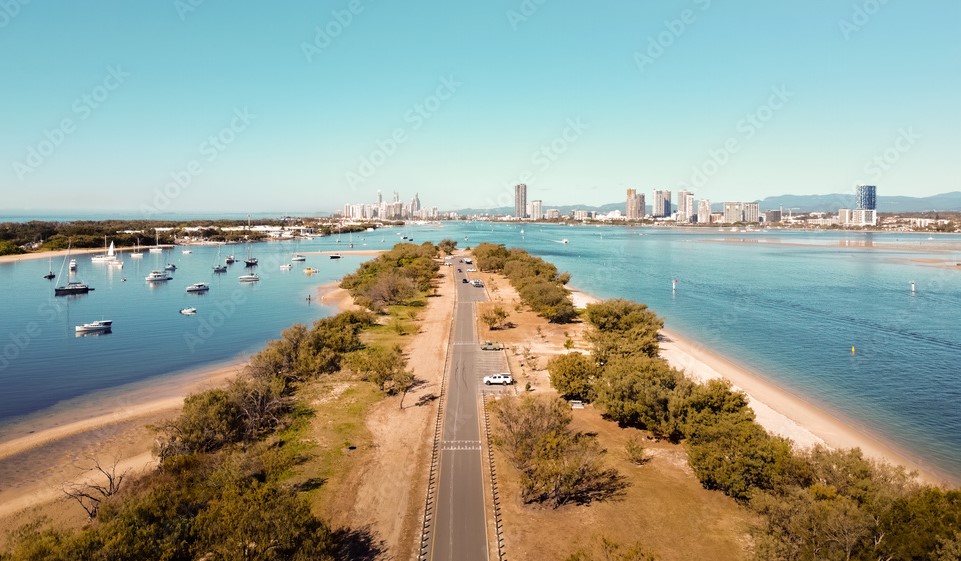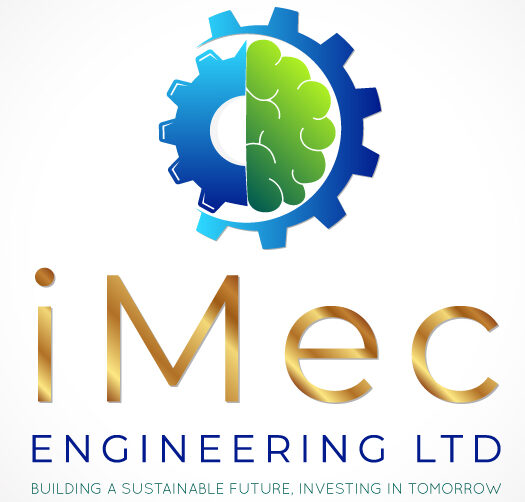Success Stories

Optimizing Energy Efficiency for a Leading Manufacturing Client
Client: Ghanaian Manufacturing Company (Confidential)
Industry: Manufacturing and Processing
Objective: To reduce energy consumption and operational costs by upgrading the existing mechanical systems to a more sustainable, energy-efficient solution.
The Challenge
Our client, a leading manufacturer in Ghana, faced rising energy costs due to outdated mechanical systems, particularly within their heating, ventilation, and air conditioning (HVAC) and processing equipment. These systems not only consumed excessive energy but also required frequent maintenance, leading to costly downtime and reduced productivity.
The client approached imec Engineering Ltd to develop a customized solution to optimize energy usage, reduce costs, and improve operational efficiency, all while maintaining the facility’s productivity and adhering to regulatory standards.
Our Solution
To tackle the client’s challenges, our team conducted a comprehensive energy audit of the facility, analyzing all major mechanical systems for inefficiencies. Based on our findings, we proposed a multi-phase solution focused on energy optimization and sustainability:
- – HVAC System Redesign: We designed an energy-efficient HVAC system, leveraging modern components and automation controls to reduce unnecessary energy consumption. The system was tailored to handle Ghana’s climate, enhancing comfort and productivity while minimizing costs.
- – Equipment Upgrades: Key mechanical components within the processing units were upgraded to high-efficiency models, drastically lowering energy use. Advanced materials were selected to improve durability and reduce maintenance needs.
- – Energy Recovery System: We implemented a waste heat recovery system to capture and repurpose heat generated by the machinery. This allowed the client to utilize excess energy in other parts of the facility, further reducing overall consumption.
- – On-Site Training: To ensure ongoing efficiency, we provided on-site training for the client’s team, focusing on best practices for energy management and maintenance routines.
Results
The impact of our solution was transformative for the client’s operations:
– Energy Cost Reduction: The facility’s energy costs dropped by over 35%, resulting in substantial annual savings and a rapid return on investment.
– Operational Uptime: Enhanced reliability and reduced maintenance allowed the client to increase uptime by 15%, boosting productivity across operations.
– Environmental Impact: The new system significantly reduced the facility’s carbon footprint, helping the client achieve corporate sustainability goals and positively impacting their brand reputation.

Streamlining Design Review and Collaboration for a Major Infrastructure Project
Client: Government Infrastructure Agency (Confidential)
Industry: Infrastructure and Construction
The Challenge
Our client, a governmental agency managing a large-scale infrastructure project, faced significant challenges in the design review phase. The project involved multiple stakeholders and engineering teams, which led to frequent delays and communication breakdowns, particularly during design revisions. Without an efficient, centralized design review process, errors were often caught late, escalating project costs and extending timelines.
The client engaged imec Engineering Ltd to provide a solution that would enhance design accuracy, improve collaboration among teams, and accelerate the review process, ensuring all project phases could proceed seamlessly.
Our Solution
imec Engineering Ltd devised a multi-step approach to streamline the design review and collaboration process. The solution combined technology, structured workflows, and a centralized review system to address key issues:
- – Centralized Design Review Platform: We implemented an advanced, cloud-based design review platform allowing real-time collaboration among the client’s engineers, consultants, and project managers. This platform facilitated document sharing, markup, and version control, ensuring that all team members had access to the latest designs and comments.
- – Automated Revision Tracking: To prevent version conflicts, we established an automated tracking system for design revisions, making it easy to identify changes and track each version. This step helped reduce errors and allowed teams to reference previous design decisions without confusion.
- – Cross-Disciplinary Collaboration Workshops: We organized and led workshops that brought together engineering teams from different disciplines (civil, mechanical, structural, etc.) to collaborate on critical design elements. These workshops created a shared understanding of each team’s requirements and helped identify potential issues early in the design process.
- – 3D Modeling and Simulation Integration: We utilized 3D modeling and simulation tools to visualize design proposals, test their feasibility, and identify potential conflicts before they could become costly errors. The visual models were instrumental in aligning all stakeholders on design decisions and improvements.
- – Regular Progress Reviews and Client Feedback: We scheduled structured, recurring reviews with all relevant teams, providing the client with transparent updates and opportunities for feedback throughout the project. This approach kept the client involved at each stage and ensured that any adjustments could be made proactively.
Results
The implementation of our collaborative design review solution yielded significant improvements for the client:
– Enhanced Design Accuracy: Early identification of potential design conflicts and improved coordination led to a reduction of design errors by 40%, saving substantial costs in corrective work.
– Reduced Review Times: The streamlined review process, combined with real-time collaboration tools, reduced the design review cycle time by 50%, keeping the project on schedule and minimizing delays.
– Improved Team Collaboration: The centralized platform and regular workshops fostered greater teamwork and understanding between departments, creating a more cohesive and effective project management environment.
– Client Satisfaction: By providing transparency, facilitating feedback, and reducing the overall timeline, imec Engineering Ltd exceeded client expectations, establishing a strong, ongoing partnership with the agency.

Enhancing Project and Design Collaboration for a Sustainable Energy Facility
Client: Renewable Energy Company (Confidential)
Industry: Renewable Energy
The Challenge
Our client, a renewable energy provider developing a large-scale solar energy facility, encountered challenges in coordinating design and project milestones due to the complexity of integrating multiple engineering disciplines, including civil, electrical, and environmental engineering. Communication gaps, especially during the design phase, led to project delays, design inconsistencies, and resource inefficiencies.
The client approached imec Engineering Ltd to provide a streamlined collaboration and project management solution to ensure efficient communication, design consistency, and adherence to sustainability goals.
Our Solution
imec Engineering Ltd developed a structured approach to improve cross-disciplinary collaboration, combining advanced project management tools, real-time communication, and consistent design review processes to support the client’s objectives.
- – Integrated Project Management Platform: We implemented a centralized project management tool that allowed all stakeholders to track project milestones, share updates, and manage resources in real time. This platform provided a single source of truth, where every team could access the latest project status and stay aligned on timelines.
- – Cross-Functional Design Review Cycles: We scheduled regular design review sessions with representatives from each engineering discipline to ensure that every team’s input was considered and aligned with the project goals. This structure encouraged early identification of potential design conflicts, enabling quick resolution and minimizing rework.
- – Sustainability Metrics Dashboard: To support the client’s sustainability objectives, we developed a dashboard that tracked key sustainability metrics, including energy efficiency, material usage, and waste reduction. This tool helped ensure that all design and construction decisions aligned with sustainability standards and facilitated regular client reporting.
- – BIM (Building Information Modeling) Integration: Utilizing BIM software, we provided 3D models that integrated contributions from all engineering disciplines, allowing teams to visualize the project and simulate various design scenarios. This helped identify and address potential design conflicts early on, enhancing overall design accuracy.
- – On-Site and Remote Collaboration Sessions: We organized a combination of on-site workshops and remote video conferences to facilitate communication and foster collaboration among team members. These sessions helped maintain consistent dialogue between project stakeholders, reducing misunderstandings and fostering a sense of shared ownership.
Results
The collaborative tools and structured project management provided immediate and measurable benefits:
– Reduced Design Conflicts: By integrating BIM and scheduling regular review sessions, we reduced design conflicts by over 60%, saving significant time and resources typically lost to rework.
– Improved Project Timeline: With enhanced project coordination and real-time milestone tracking, the project stayed on schedule, with project phases being completed 20% faster than initially anticipated.
– Increased Sustainability Compliance: The sustainability dashboard ensured that all project activities adhered to environmental goals, achieving a 30% reduction in material waste and a significant improvement in energy efficiency for the facility.
– Enhanced Team Collaboration: Cross-functional communication tools and frequent design reviews improved inter-team collaboration and client satisfaction, ensuring a smooth project workflow and a stronger sense of partnership.
